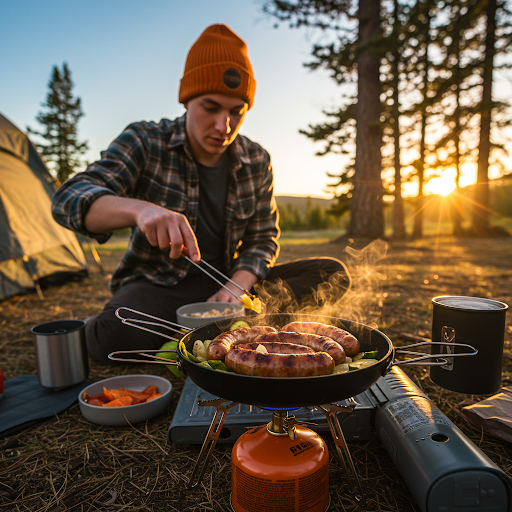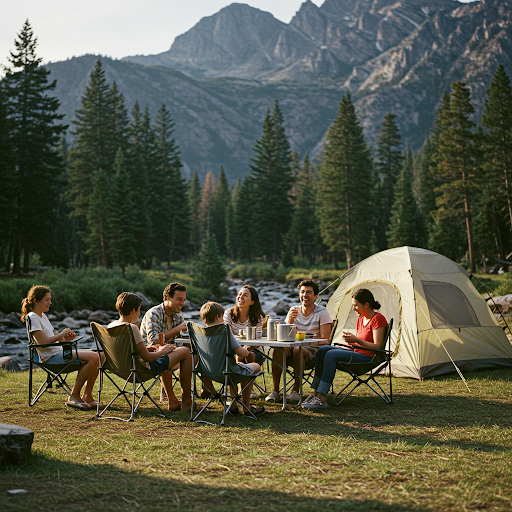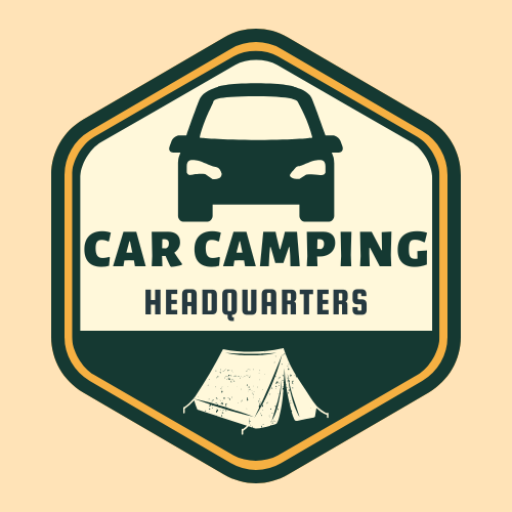Your cart is currently empty!
The call of the open road and the tranquility of nature beckon, and car camping offers the perfect escape. It’s an accessible, affordable, and incredibly rewarding way to immerse yourself in the outdoors without sacrificing too much comfort. Whether you’re a seasoned outdoor enthusiast or a first-time camper, these expert tips will guide you in planning a smooth and truly enjoyable car camping experience.
Gear Up for Adventure: Your Essential Car Camping Checklist
The right gear can make or break your camping trip. The focus is on practical, affordable items that enhance the experience without breaking the bank. You don’t need the most expensive gadgets to have a great time.
Start with the basics: a reliable tent with a rainfly , sleeping bags appropriate for the expected temperatures , and comfortable sleeping pads or an air mattress. Don’t forget pillows for a good night’s sleep; you can even bring your own from home for extra comfort.
A portable camp stove and fuel are essential for cooking delicious meals. Pack cookware, eating utensils, plates, bowls, and mugs. A cooler is crucial for keeping perishable food and drinks cold; consider a quality cooler for longer trips.Lighting is also key – headlamps or flashlights for navigating in the dark and a lantern for illuminating your campsite. Camp chairs will provide comfortable seating around the campfire or picnic table.
For budget-friendly options, repurposing items you already own is a great strategy. Blankets from home can substitute for an expensive sleeping bag in warmer weather, and that old beach chair in your garage will work just fine as a camp chair. Investing in a few key, affordable items can significantly enhance your comfort and enjoyment.
| Item | Notes |
| Tent | Look for ease of setup and appropriate size for your group. |
| Sleeping Bag | Check temperature ratings for your destination. |
| Sleeping Pad/ Air Mattress | Adds insulation and comfort. |
| Pillow | Bring one from home or a compact camping pillow. |
| Camp Stove and Fuel | Essential for cooking. |
| Cookware and Utensils | Include pots, pans, plates, bowls, and cutlery. |
| Cooler | Choose a size appropriate for your trip length. |
| Headlamp/Flashlight | Essential for navigating in the dark. |
| Lantern | Provides broader campsite illumination. |
| Camp Chairs | For relaxing around the campsite. |
| First Aid Kit | Be prepared for minor injuries. |
| Water Bottles/Water Jugs | Stay hydrated. |
| Multi-Tool/Knife | Handy for various tasks. |
| Sunscreen/Insect Repellent | Protect yourself from the elements. |
| Trash Bags | Pack it in, pack it out. |

Finding Your Perfect Campsite: Location, Amenities, and Booking
Choosing the right campsite is crucial for a smooth and enjoyable experience. Consider what kind of environment you’re looking for – do you want to be near a lake, a hiking trail, or perhaps in a secluded forest? Think about the amenities you desire. Do you need restrooms and running water, or are you comfortable with a more primitive setting? Many campgrounds offer picnic tables and fire rings. Some private campgrounds even offer additional services.
Accessibility is another important factor. Ensure the campsite is easily reachable by your car. Online resources make finding and booking campsites easier than ever. Websites like Hipcamp, FreeCampsites.net, and Roadtrippers offer extensive databases with reviews and photos. National and state park websites also allow for online reservations. Booking in advance is highly recommended, especially during peak season and on weekends, as popular spots can fill up quickly. Be sure to check the specific rules and regulations of the campsite you choose before you go.
Fueling Your Adventure: Easy and Delicious Camp Meals
Car camping opens up a world of culinary possibilities beyond basic trail mix. Plan your menu in advance and consider prepping some ingredients at home to save time at the campsite.
One-pot meals are your best friend when camping. Think pasta dishes, chili, stews, or even foil packet meals cooked over the campfire or on your camp stove. Tacos are always a crowd-pleaser, with pre-cooked meat and easy-to-pack toppings. For breakfast, consider make-ahead options like overnight oats or classic camping fare like pancakes or breakfast burritos. Don’t forget snacks for between meals, such as granola bars, nuts, and fruit.
For minimal equipment, embrace no-cook meals like sandwiches, wraps, salads, and even elevated options like lox bagels or Greek yogurt parfaits. A portable electric kettle can be a game-changer for heating water quickly for oatmeal, instant soups, or coffee. Remember to bring spices and sauces to add flavor to your camp cooking.

Comfort and Organization in the Great Outdoors: Packing and Setting Up
Staying comfortable and organized during your car camping trip enhances the entire experience. Efficient packing is key, especially in smaller vehicles. Utilize storage bins or tubs to group similar items together, such as kitchen gear, clothing, and sleeping supplies. Pack heavier items at the bottom of your car and distribute the weight evenly. Consider using stuff sacks to compress bulky items like sleeping bags and clothing.
Setting up a comfortable sleeping arrangement is crucial for a good night’s rest. Choose a level spot for your tent. Use a ground tarp underneath your tent to protect it from moisture and damage. Inside the tent, ensure your sleeping pad or air mattress is properly inflated.
Arrange your sleeping bag and pillows for maximum comfort. For sleeping in your car, consider a car mattress or sleeping pad designed for vehicle use. Window covers are essential for privacy, blocking out light, and temperature regulation.
Managing waste responsibly is a vital aspect of car camping. Bring trash bags and pack out everything you pack in, following Leave No Trace principles. If there are no restroom facilities, be prepared to dispose of human waste properly, either by using a portable toilet or digging a cathole at least 200 feet away from water sources, trails, and campsites.
| Packing Tips | Description |
| Utilize Storage Bins | Group similar items together for easy access and organization. |
| Pack Heavy Items Low | Place heavier items at the bottom of your car for better weight distribution. |
| Use Vacuum Bags | Compress bulky items like sleeping bags and clothing to save space. |
| Designate Spots | Assign specific locations for frequently used items like keys and headlamps. |
| Maximize Vertical Space | Stack bins and bags to utilize all available space in your vehicle. |
| Prepare a “Day Bag” | Keep essentials for day trips (hiking gear, snacks, water) separate and easily accessible |
| Pack a Repair Kit | Include duct tape, multi-tool, and cord for quick fixes. |
| Prechill Coolers | Chill your cooler with ice or ice packs before adding food and drinks to maximize cooling efficiency. |
| Use Reusable Containers | Opt for reusable food containers and water bottles to reduce single-use waste. |
| Plan Your Packing | Create a checklist and plan where each item will go before you start packing. |

Safety First: Essential Precautions for a Worry-Free Trip
Safety should always be a top priority when car camping. Be aware of the wildlife in the area and take precautions to avoid encounters. Store food and trash securely in your car or in animal-resistant containers. Never feed wild animals. When hiking, make noise to alert animals of your presence. Carry bear spray if you are in bear country and know how to use it.
Practice fire safety diligently. Check local regulations regarding campfires. Use designated fire rings or pits and clear the area around your campfire of flammable materials. Never leave a fire unattended and extinguish it completely before leaving your campsite or going to sleep. Keep water and a shovel nearby in case of emergencies.
A well-stocked first-aid kit is essential for treating minor injuries. Include bandages, antiseptic wipes, pain relievers, blister treatment, and any personal medications. It’s also wise to have a multi-tool or knife for various situations. Carry a map and compass as a backup to GPS, especially in areas with limited cell service. Let someone know your itinerary and expected return time.
| Essential Items | |
| First Aid Kit | Adhesive bandages, antiseptic wipes, antibacterial ointment, pain relievers, blister treatment, medical tape, gauze pads, personal medications. |
| Navigation | Map, compass, GPS device or app (with offline maps downloaded). |
| Emergency | Multi-tool or knife, whistle, emergency blanket, fire starter, headlamp with extra batteries. |
| Wildlife Safety | Bear spray (if applicable), animal-resistant food storage bags or containers. |
| Fire Safety | Matches or lighter, water bucket or shovel. |
| Communication | Cell phone, portable charger, satellite communication device (for remote areas). |

Tread Lightly: Practicing Responsible Camping Habits
Embracing Leave No Trace principles ensures that we protect the natural environments we enjoy for future generations.Plan ahead and prepare by knowing the regulations of the area you’ll visit and packing appropriately.
Travel and camp on durable surfaces, sticking to established trails and campsites. Dispose of waste properly by packing out all trash, including food scraps and toilet paper.
Leave what you find, resisting the urge to take souvenirs. Minimize campfire impacts by using a camp stove whenever possible and keeping campfires small and contained when permitted.
Respect wildlife by observing from a distance and never feeding animals. Be considerate of other visitors by keeping noise levels down and respecting their experience.
| Principle | Description |
| Plan Ahead and Prepare | Know regulations, weather, hazards; schedule trips to avoid high use; travel in small groups; repackage food to minimize waste; use maps and compass. |
| Travel and Camp on Durable Surfaces | Stick to trails and designated campsites; camp at least 200 feet from water. |
| Dispose of Waste Properly | Pack out all trash, leftover food, and litter; deposit solid human waste in catholes 6-8 inches deep, 200 feet from water; pack out toilet paper and hygiene products; carry water for washing. |
| Leave What You Find | Preserve the past; leave rocks, plants, and natural objects; avoid introducing non-native species; do not build structures. |
| Minimize Campfire Impacts | Use a lightweight stove; where fires are permitted, use established fire rings; keep fires small; burn all wood to ash; scatter cool ashes. |
| Respect Wildlife | Observe from a distance; do not follow or approach; never feed animals; store food and trash securely; control pets; avoid during sensitive times. |
| Be Considerate of Others | Respect others; be courteous; yield on trails; take breaks away from others; let nature’s sounds prevail; avoid loud voices and noises. |

Making Memories: Activities and Entertainment
Car camping provides a fantastic basecamp for a variety of activities. Hiking is a classic camping activity, with trails ranging from easy strolls to challenging climbs. Stargazing is another rewarding experience, especially away from city lights; download a stargazing app to help identify constellations.
Bring along games for entertainment around the campfire or picnic table. Card games, board games, and outdoor games like cornhole or ladder toss are always fun. Photography is a popular hobby, and camping offers countless opportunities to capture stunning landscapes and memorable moments. Don’t forget to bring books or journals for some quiet downtime. If you’re near water, swimming, kayaking, or canoeing can add another dimension to your camping trip.
Share the Adventure: Making Car Camping Social Media Worthy
For millennials, sharing experiences is often a key part of the fun. Capture your stunning campsite setups and breathtaking views with your phone or camera. Use relevant hashtags like #carcamping, #millennialcamping, and #[yourlocation]camping when posting on social media platforms like Instagram and Facebook. Consider creating engaging content like blog posts or videos about your trip. Remember to be mindful of staying present and enjoying the moment, not just focusing on content creation.
Connecting with other campers can also enhance the social aspect of your trip. Be open and approachable at the campground. Participate in campground activities if available. You might meet like-minded travelers who share your passion for the outdoors. Encourage your friends to join you on your car camping adventures to create lasting memories together. Sharing your own tips and recommendations online can also help inspire others to try car camping.

Conclusion: Your Car Camping Adventure Awaits!
Car camping offers a fantastic opportunity to connect with nature, embark on exciting adventures, and create lasting memories. By following these tips, you can ensure a smooth, enjoyable, and safe experience. So, gather your gear, choose your destination, and get ready to hit the road for an unforgettable car camping adventure! Remember to explore responsibly, respect the environment, and share the joy of the great outdoors with others.


Leave a Reply